National Register sites
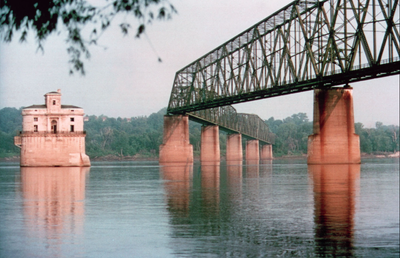
Illinois and Missouri-Chain of Rocks Bridge Madison, Illinois to St. Louis, Missouri
Chain of Rocks Bridge is one of the more interesting bridges in America. It’s hard to forget a 30-degree turn midway across a mile-long bridge more than 60 feet above the mighty Mississippi. For more than three decades, the bridge was a significant landmark for travelers driving Route 66. The bridge’s colorful name came from a 17-mile shoal, or series of rocky rapids, called the Chain of Rocks beginning just north of St. Louis. Multiple rock ledges just under the surface made this stretch of the Mississippi River extremely dangerous to navigate. In the 1960s, the Corps of Engineers built a low-water dam covering the Chain of Rocks. That’s why you can’t see them today. Back in 1929, at the time of the construction of the bridge, the Chain was a serious concern for boatmen.
Read More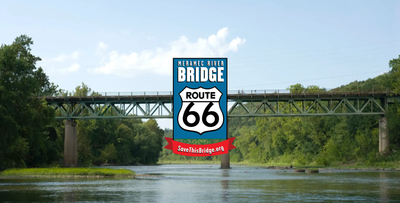
Missouri-Meramec River U.S. 66 Bridge East of Eureka, St. Louis County, Missouri
After its designation in 1926, the course Route 66 took from Illinois to California did not remain static. As practical and political concerns arose, authorities rerouted it to meet them. Meramec River U.S. 66 Bridge resulted from this rerouting. The bridge and the road it supported helped to transform the surrounding area from a wealthy retreat center to a working-class town. More recently, the bridge has become a centerpiece of a State Park devoted to Route 66.
Read More
Kansas-Brush Creek Bridge Cherokee County, Kansas
Three and a half miles north of Baxter Springs, Kansas stands the elegant Brush Creek Bridge, the only remaining example of a fixed Marsh Rainbow Arch bridge left on Kansas Route 66. Two other examples, the Spring River and Willow Creek bridges, were dismantled in the early 1990s. The Brush Creek Bridge, also known as the Rainbow Bridge, was part of a project in the early 1920s to connect the mining communities of Galena, Riverton, and Baxter Springs with a concrete road. The unique and graceful Rainbow Arch design was the brainchild of James Barney Marsh, a bridge designer from Iowa, who patented the concrete and steel truss design in 1912. Marsh spent the next two decades erecting approximately 70 of his Rainbow Arch bridges throughout the Midwest, most of them in Kansas, where approximately 35 still remain.
Read More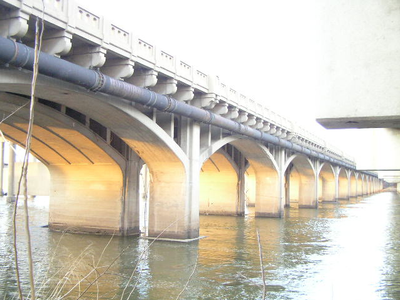
Oklahoma-11th Street Arkansas River Bridge Tulsa, Oklahoma
Built in 1916-1917 over the Arkansas River in Tulsa, the 11th Street Arkansas River Bridge is significant as the first major multi-span concrete bridge in Oklahoma. The bridge became a critical link between downtown Tulsa and the oil fields to the west. The mid-1910s was a period of great activity for Tulsa because of the booming oil economy. Across the Arkansas River, West Tulsa expanded rapidly to become a busy area for refining oil. The increase in traffic and trucking associated with the oil business made replacing the earlier wooden bridge a necessity.
Read More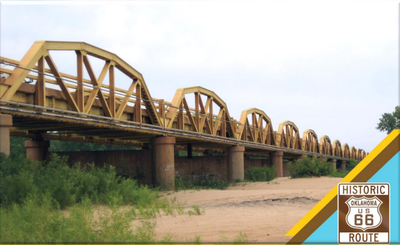
Oklahoma-US-281(Route 66) Bridgeport Bridge in Canadian and Caddo Counties
This bridge was suggested by Oklahoma Department of Transportation to be the most historically significant bridge in the state. Oklahoma does not have the notable old 19th century cast and wrought iron truss bridges of states in the eastern United States. However, it has two unusual truss bridge forms that are unique to the state. The state is noted for its use of through truss bridges that utilize unique K-Parker truss configurations. The state is also noted for its extremely long simple-span truss bridges, most of which are created from state-standard pony truss spans. Of those ultra-long pony truss bridges, this bridge is by far the longest example and the best example. It has been reported to be the longest bridge of any kind in Oklahoma.
Read More
Oklahoma-Bridge #18 at Rock Creek Sapulpa, Oklahoma
Of the great number of bridges built on Route 66, Bridge #18 at Rock Creek is one of the better examples of the remaining steel-truss bridges in Oklahoma. Truss bridges were developed in the mid-1800s and used extensively until World War II, when technology changed and more standardized concrete designs were developed.In terms of lineage, the ancestor of the steel-truss bridge is the beam bridge, usually built of wood and limited in the amount of weight it could support. As a result, early roads generally followed old trails where rivers and creeks were shallow. Even bridges that were quite long were located at shallow crossings.
Read More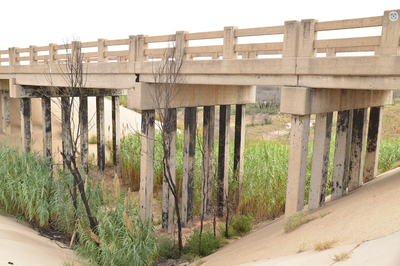
Texas-Route 66 Bridge over the Chicago, Rock Island, and Gulf Railroad Shamrock, Texas
The Route 66 Bridge over the Chicago, Rock Island, and Gulf Railroad is a Route 66 landmark that travelers might miss if they’re not looking for it. The bridge stands in the arid plains eight miles east of Shamrock, five-and-a-half miles west of the Oklahoma State line, and 12 miles southeast of Wheeler.Paved in 1932, Route 66 was the primary road in this development. The highway passed through numerous small towns, most of which had fewer than 500 residents. The high plains of the Panhandle are relatively flat, so the area didn’t require many bridges, which makes the bridge in Wheeler County somewhat unusual. Another unusual feature is that the bridge carried both automobile and train traffic. Designed as a double-decker, the bridge has train tracks for the Chicago, Rock Island, and Gulf Railroad running along a deck 25 feet below the roadbed of Route 66.
Read More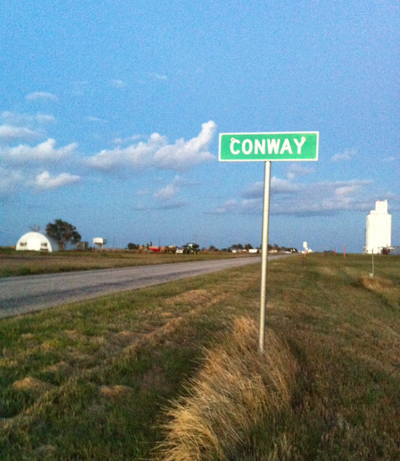
Texas-Route 66, SH 207 to Interstate 40 Conway, Texas
When Interstate 40 was completed through Carson County, this section of Route 66 became Texas Farm Road 2161, part of the county’s highway system. Today it is the longest and best preserved section of Route 66 in Texas, carrying local traffic and travelers out to capture the distinctly American ambiance of old Route 66. It was listed in the National Register of Historic Places in 2007. Early in the 1900s, this roadway was little more than a dirt path. In 1930, the path was paved, and by 1940, it was a bustling highway. An aerial view today looks much the same as it did then, a straight line of highway framed on both sides by square agricultural fields in various shades of brown, yellow, and green.
Read More
New Mexico-Rio Puerco Bridge Rio Puerco, New Mexico
Heading west out of Albuquerque on Route 66, travelers can enjoy a scenic descent from Nine Mile Hill into the Rio Puerco Valley, where a Parker through truss bridge crosses the steeply eroded banks of the Rio Puerco River. The valley is the site of Laguna Pueblo, the home of Puebloans since the 1300s. Because the Rio Puerco is known for its violent flooding and severe erosion, the State Highway Department specifically chose a Parker through truss bridge design for the Rio Puerco Bridge to eliminate the need for a center pier and prevent washouts. The bridge consists of 10 panels measuring 25 feet in length, each with its top cord at a different angle, as is characteristic of Parker truss design bridges. The 25-foot wide deck is concrete with an asphalt surface and rests on steel stringers. This design was selected partially because it was commonly used during the late-1920s and 30s, but also because it was particularly suitable for this bridge, which needed to withstand a river capable of massive flooding that had washed away previous bridges along the Rio Puerco.
Read More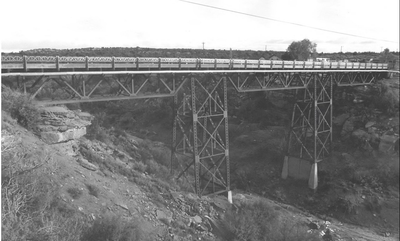
Arizona-Querino Canyon Bridge Houck, Arizona
The Querino Canyon Bridge is picturesquely situated over a rugged and beautiful canyon just outside Houck, Arizona. Designed by the Arizona Highway Department, the bridge is a representative example of early highway truss design: 77 feet long, 20 feet wide, and comprised of a concrete-decked steel trestle with three Pratt deck trusses supported by steel piers. Concrete abutments support the bridge from below and steel lattice guardrails typical of the period line the roadway. This section of the highway became a county road during the 1960s after construction of Interstate 40. The Querino Canyon Bridge remains intact, carrying local traffic on the Navajo Indian Reservation. It was listed in the National Register of Historic Places in 1988.
Read More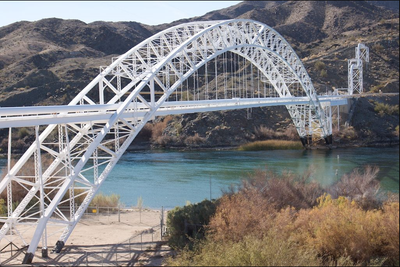
Arizona – California-Old Trails Bridge Topock, Arizona
An innovative piece of engineering, one enormous span of 600 feet supports the 800-foot bridge that crosses the Colorado River in Topock, halfway between Yuma and the Utah border. The bridge carried automobile traffic over the Colorado River from 1916 until 1948. In Topock, engineers used a unique cantilever method of construction assembling bridge halves on their sides on the ground and hoisting them into place using a ball-and-socket center hinge. This meant that the structure was not supported by traditional spans from the ground up as it was being built. The use of the cantilever was a daring move for its time, creating the longest arched bridge in America. At 360 tons, it was the lightest and longest bridge of its kind. From the day it opened, this graceful arch and the deck it supported were a pivotal Colorado River crossing, first on the transcontinental National Old Trails Road and, by 1926, on Route 66.
Read More
Colorado Street Bridge Pasadena, California
With its majestic arches rising 150 feet above the deeply cut Arroyo Seco, the Colorado Street Bridge was proclaimed the highest concrete bridge in the world upon completion in 1913. The bridge impressed travelers from the day it opened. Until then, the crossing of the Arroyo Seco required horses and wagons to descend the steep eastern slope, cross a small bridge over the stream, and then climb the west bank through Eagle Rock Pass. Given this harsh topography, the Colorado Street Bridge proved a challenge to design and build. Solid footing eluded engineers in the seasonally wet arroyo bed. These engineering challenges were solved when engineer John Drake Mercereau conceived the idea of curving the bridge 50 degrees to the south. This solution coupled with a graceful design of soaring arches and a curved deck created a work of art that received Historic Civil Engineering Landmark designation and listing in the National Register of Historic Places. Mercereau chose to support the bridge’s 28-foot-wide roadway and five-foot-wide sidewalks using spandrel construction. In this system, support columns rest on the expansive arched ribs of the bridge. Mercereau’s design also included classical balusters and ornate cast-iron lamp posts supporting multi-globed lamps.
Read More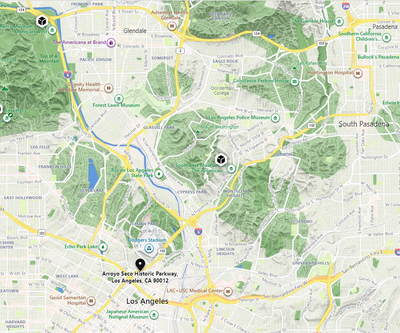
Arroyo Seco Parkway Los Angeles, California
A drive through the Arroyo Seco is a ride through history. Some call the Arroyo Seco Parkway the starting point for Los Angeles car culture. It was the first “freeway” in the West and an engineering marvel of its time. Add to that the distinction and imprint of historic Route 66 and you have the makings for the perfect adventure by car. Upon its completion in 1940, it was designated an alignment of Route 66 becoming the first stretch of the Mother Road to run over a modern, limited-access highway in the nation. If the spread of the freeway concept, eventually embodied by the national Interstate Highway System, spelled the beginning of the end for Route 66, the Arroyo Seco Parkway still stands as a remarkable piece of urban transportation history and holds a unique place in the story of Route 66.
Read More